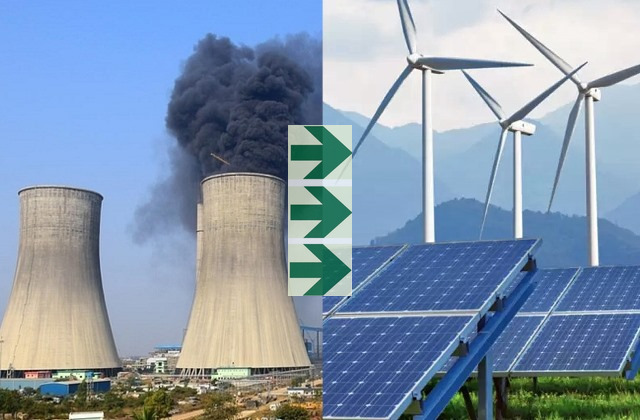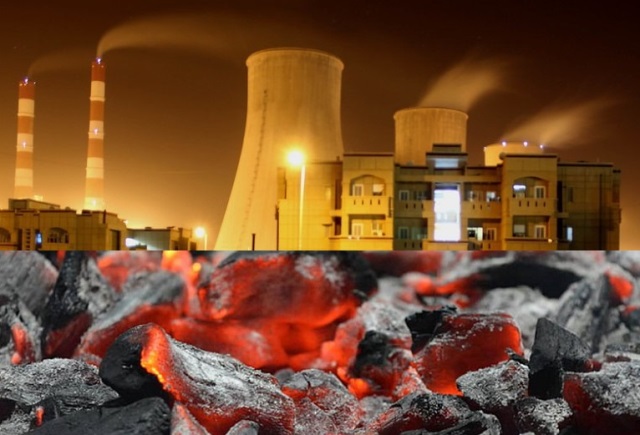For all the ills associated with its mining, including biodiversity loss, soil degradation, mines fire, frequency of accidents leading to loss of lives and serious injuries and soil subsidence (Jharia in West Bengal stands as a stark example) and burning to produce energy and electricity, coal fell out of favour of environmentalists and civic society a long time ago.
It will not, however, be said that their concern about environment fouling and damages to human health has so far had any significant bearing on political establishments and businessmen to not allowing opening of new coal mines or commissioning of fresh capacity of coal fired electricity. Like any other groups, politicians must be acutely aware that in the process of generating electricity, coal is found to be the largest single emitter of carbon dioxide (CO2) and therefore, the principal culprit of climate change.
Admittedly, the global annual growth in coal use in 2024 was down to 1 per cent to 8.77 billion tonnes but that volume was a record. The world is waiting expectantly for coal demand to fall, albeit marginally, this year on China facing economic headwinds using less coal. This will though hardly give any relief to the damage coal continues to do to the environment.
Besides all the nature fouling that happens at the point of burning of coal, the toxic substances generated during coal excavation such as heavy metals, acid, coal ash and radioactive materials that find their way into rivers and other water-bodies and in the process degrade water quality. India and other coal producing countries have seen once fertile land undergoing change in quality for the worse and productivity loss from disposal of mine waste, including coal ash. Therefore, a very high consumption of the fossil fuel offers a key challenge for climate mitigation and environmental sustainability.
Explaining the global high use of coal, the International Energy Agency says while the demand for the solid fuel in most developed economies appears to have plateaued, the demand for coal continues to grow in some emerging economies, where the principal point of use is the thermal electricity sector. Driven by economic and population growth, these economies require growing volumes of electricity. IEA further says countries including India, Indonesia, South Africa, Vietnam and possibly China are to see significant rises in power generation in the next three years. India’s coal production in 2024-25 was 1,047.69 million tonnes and like in so many other areas, China, which is miles ahead of us in so many industries had coal output of 4.8 billion tonnes in 2024.
While India remains in hot pursuit to build renewable sources of energy, particularly around solar and wind, it has at the same time set an ambitious coal production target of 1.5 billion tonnes by 2030. The big production target is moored in the hope to restrict coal imports. The world’s second largest importer of coal, 243.62 million tonnes of the fuel arrived at different Indian ports during 2024-25, thankfully marking a fall of 7.9 per cent over the previous year. Further, the country’s seaborne coal imports were down 4.9 per cent year-on-year in the first nine months of 2025 to 175 million tonnes. Incidentally, India accounts for over 18 per cent of global seaborne trade in the commodity.
The dominant profile of coal in the country’s energy management has only strengthened the resolve of the government with enthusiastic participation of industry, both public and private sectors, in building renewable capacity at a rapid pace. At the same time, there is policy encouragement to set up factories to make solar cell and module and wind turbine generators with globally recognised quality assurance protocols.
Next only to China, India now has solar module manufacturing capacity in excess of 100 GW and cell making capacity of 27 GW racing to become 40 GW by 2026 March end. By September last, India’s non-fossil fuel electricity installed capacity became 247.30 GW, in which the share of renewable energy was 233.99 GW. As a result, the non-fossil fuel capacity now constitutes more than half the country’s total installed capacity of 484.82 GW.
Considering the sun shining bright round the year over most of the huge Indian land mass and the wind resource here, particularly in the long coastal and desert areas also being substantial, it is natural that the combined domestic and international pressure to contain, if not reduce, carbon emissions progressively will push rapid growth of solar and wind power capacity.
The growth in solar capacity is particularly impressive with capacity at September end at 127.33 GW. Wind energy capacity at that point was 53.12 GW. The exponential growth in capacity created in recent years backed by needed policy support should then hopefully allow India to achieve the targeted non-fossil fuels-based electricity capacity of 500 GW by 2030. All the major users of electricity, including integrated steel mills and aluminium and copper smelters are engaged in building green electricity capacity to mitigate their carbon footprint.
Thankfully, companies engaged in producing electricity by burning coal have started building portfolios of solar and wind power in line with the country’s policy objective to reduce carbon emissions. India has made a commitment to become a net zero emissions nation by 2070. For this to happen in the world’s third largest polluter, after China and the US, every agency whether in the government or the private sector will be required to make transition to green energy use cutting back dependence on thermal electricity.
Reliance Industries, which among other things, is an energy giant but based on fossil fuels is building one of the world’s largest single-site renewable energy projects at Kutch in Gujarat, spanning approximately 550,000 acres. On completion, the Kutch complex will be meeting 10 per cent of the country’s electricity requirements.
Moreover, it also is to become the hub for production of cost-effective hydrogen. In the same district of Gujarat, Adani is building a solar cum wind power project designed to generate 30 GW. These two projects will remain a statement of bringing barren land, not good for growing any crops, into use for producing green energy, using the sun and wind available aplenty in the coastal area.

